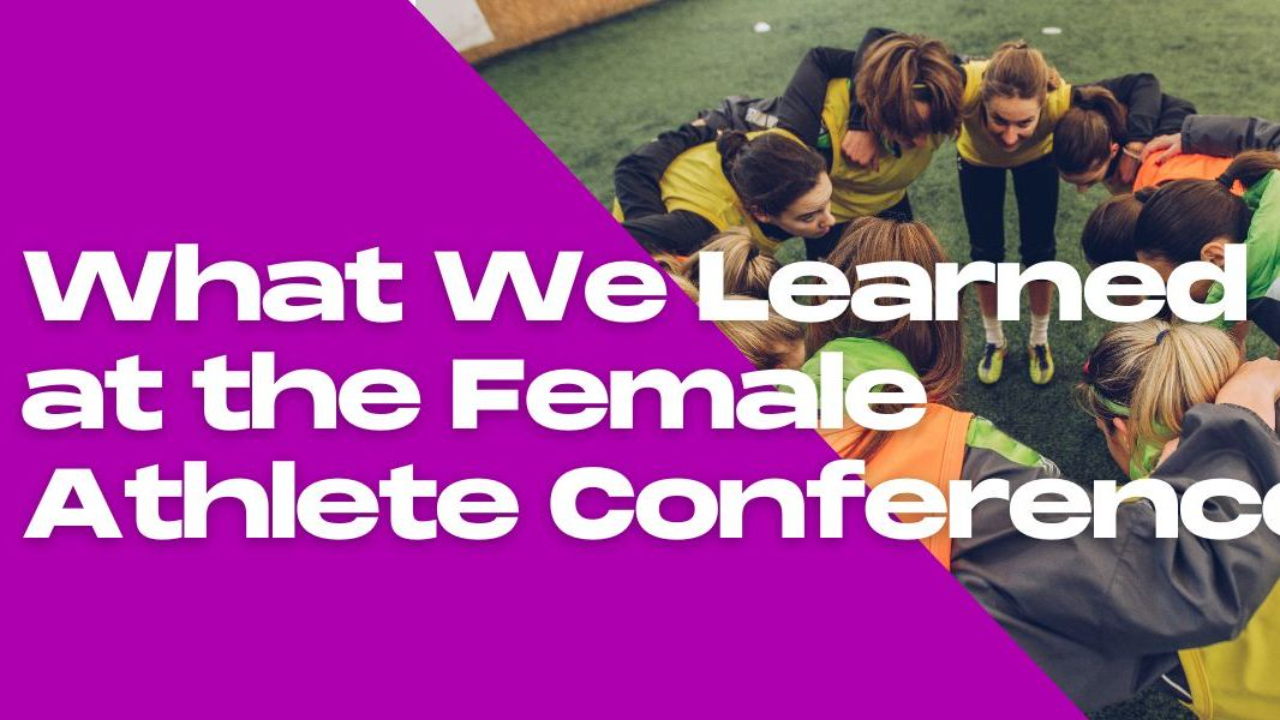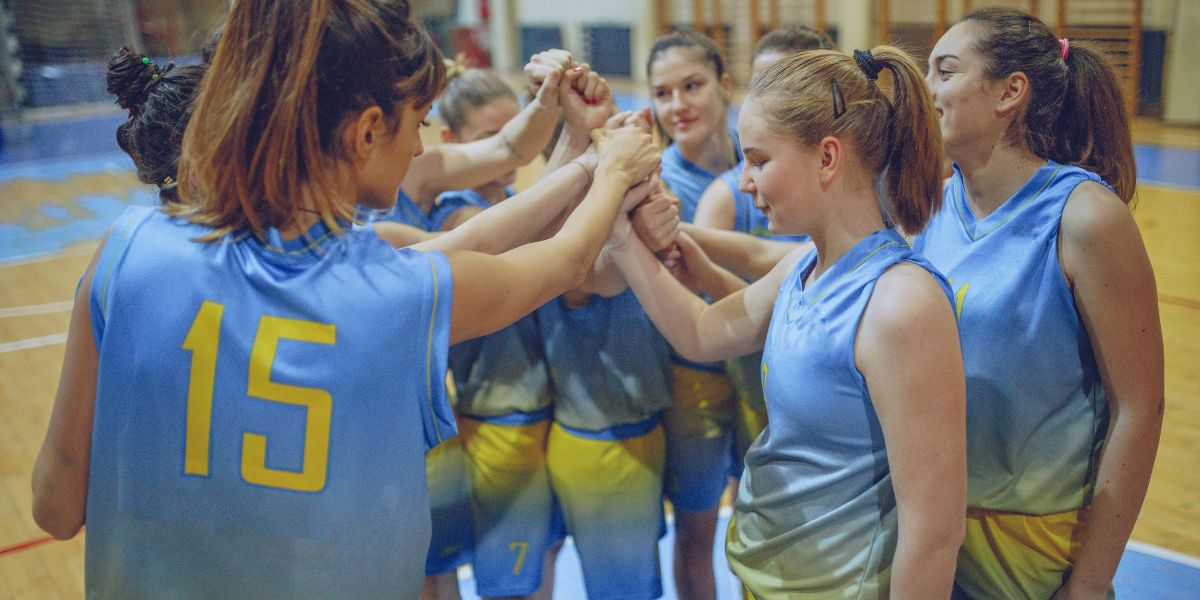
What We Learned at the Female Athlete Conference
Jun 26, 2023Female-forward research is finally really happening and we’re here for it.
By Selene Yeager
Here at Feisty, we are all about female athlete performance, and we have been for years. So we were very excited to support and attend the Female Athlete Conference (FAC) in Boston, Massachusetts last month.
The self-described goal of the FAC is to close the disparity in research and treatment of female athletes and promote the understanding of female athletes' unique and understudied physiology and lived experience, as well as clinical best practices and interdisciplinary calls-to-action. As such, we were treated to three jam-packed days on topics including concussion, musculoskeletal injuries, performance and the menstrual cycle, energy availability and REDS (relative energy deficiency in sport), exercise during pregnancy and postpartum, and much more.
A huge highlight was the keynote speakers, which included Mary Cain, who famously pulled back the curtain on the now well-documented abusive culture in Nike’s Oregon Project run by Alberto Salazar in a NY Times piece four years ago (this keynote covered her current, infuriating struggles with the medical system); women’s basketball pioneer Sherry Levin, who was Holy Cross’ all-time leader in points (2,253), scoring average (21.8) and field goals made (842) for the Crusaders and was the Head Coach at Worcester Academy where she led the team to 263 wins and 4 NEPSAC titles, and former ballroom dancer Adrianne Haslet, who completed the Boston Marathon twice after losing her left leg during the terrorist bombings in 2013. Each was inspirational, motivational, and outright awe-inspiring.
And of course, there was the science. So. Much. Science. More science, actually, than we were able to cover in one shot (we’ll be watching replays…). But some definite themes emerged that we’d love to share.
60% of female athletes say their performance is affected by their period
Not surprisingly, there were a lot of presentations surrounding hormones, the menstrual cycle, and performance. One session cited a BBC Elite British Sportswomen’s Survey showing that 60 percent of respondents said their performance had been affected by their period, and they had missed training or competitions because of it. That same study found 40% did not feel comfortable discussing their period with coaches, and 28% reported taking the pill to control the impact of the menstrual cycle on their performance.
Athletes are also very keen to learn more about how all of this—their period symptoms, reproductive hormone fluctuations, hormonal birth control—impact their training, performance, and recovery. In fact those exact topics ranked in the top 5 topics female athletes wanted more resources on according to a presentation by the scientists at FASTR out of Stanford University.
We’re all going to have to wait a while for more answers, however. So far the research is pretty messy. The studies presented did not report clear, consistent global effects of the impact of the menstrual cycle phase on physical performance, though there was some evidence that strength training in the follicular phase might be beneficial for increasing lower body strength and muscle mass and there are acute studies suggesting potential advantages for focusing on endurance training in the luteal phase.
It's not surprising when you consider all the moving parts in this type of research, including diet, lifestyle, stress, what types of sports the women play and so forth. The larger take home at this time was you may or may not benefit from syncing your training with your cycle, but it’s a good idea to know your cycle. Researchers from the Arctic University of Norway reported that systematic tracking appears to be beneficial for menstruating female athletes: 34 percent reported that they had discovered patterns related to their menstrual/hormonal contraceptive (HC) cycle and 32% said that because of what they learned from tracking, they take more consideration to the menstrual- /HC cycle when scheduling their training and competition.
Speaking of menstrual cycles, 65% of elite athletes report using hormonal contraception, with oral contraceptive pills being the most common (75%) method, followed by IUDs at (20%), with a small number using other hormonal methods like injectables. There are roughly 5 gabillion varieties of hormone contraceptives and we furiously took notes during a lightning-fast session covering common types, side effects, and best practices. The take-home there was that there should be something for everyone and the DMPA contraceptive injection had the most unfavorable side effects. As far as negative side effects for athletes, there is some evidence that the pill might result in slightly inferior exercise performance compared to naturally cycling women, but as the presenters noted, pregnancy really impacts performance, too. We would have liked to see mood brought up in the discussion since mood disruption is a common side effect and a large study out last month showed that contraceptive pills increased women's risk by 73 percent during the first two years of use.
Up to 47% of female athletes have LEA
We are still not eating enough. Research presented at FAC shows that 41 to 47 percent of female athletes have problematic low energy availability (LEA) indicators and related negative health and performance consequences. Endurance sports athletes are especially at risk here because of high training loads and the traditional emphasis on being as lean as possible (even to the detriment of performance, as we’re now seeing).
LEA and relative energy deficiency in sport (REDS) were headlining topics at the conference. We have covered this topic a lot here at Feisty Media, including how it can be especially hard to spot in peri- and postmenopausal women.
The International Olympic Committee first coined the term “Relative Energy Deficiency in Sport” (RED-S) about 10 years ago to replace the condition previously known as “Female Athlete Triad”. The goal was to bring to light that RED-S was a complex condition, which also affected males, and that impaired physiological function including, but not limited to, metabolic rate, menstrual function, bone health, immunity, protein synthesis, and cardiovascular health. The cause of REDS is prolonged LEA, which is when your energy intake is less than the energy you need to fuel your training plus your daily metabolic needs.
Stay tuned for an IOC Consensus REDS Update due out this fall. We got a sneak peek of this embargoed information, which includes expanded definitions and scales to help clinicians more precisely assess risk, spot the condition early, and help athletes get back to sport in a safe, healthy manner. The term will also now officially be REDS without the hyphen.
As with many of the issues concerning women in sport, making significant change here is going to take a cultural change in sport and the recognition by coaches, trainers, and athletic directors that body fat percentage and/or how lean someone looks is not a direct indicator of performance. We’re starting to see the needle move in a positive direction here as more women speak out and programs start to turn away from mandatory weigh-ins and body composition checks.
Body image, which came up during the conference as well, is an obvious underlying issue here. That’s also a subject we take seriously here at Feisty, realizing that the media plays an outsized role in how women perceive themselves. Athletes come in all sizes, and with work we can all build a better body image.
SafeSport Gets 150 Reports Per Week
The US Center for SafeSport is a nonprofit organization that was set up to investigate and resolve abuse and misconduct reports for the more than 11 million athletes who are in the US Olympic and Paralympic system. They were founded under the Protecting Young Victims from Sexual Abuse and Safe Sport Authorization Act of 2017. And they’ve got their work cut out for them with 150 reports coming in each week, some of which can take literally years to resolve.
They do not, however, have jurisdiction over high schools and collegiate NCAA athletes. It was clear during the conference that abuse is still too prevalent in sports. There are numerous associations working globally to make this better, but again, it takes cultural change. Too often athletes don’t understand what abuse is (i.e., a coach taking advantage of the power dynamic to have an intimate relationship with an athlete or verbal abuse that can be read as being demanding when it’s actually demeaning). All too often parents are complicit because society places so much prize and pressure on success in sport starting with even the very youngest athletes.
This is something we all need to work to fix. As more women like Mary Cain and Kara Goucher speak out and more women fill positions of power and influence (not that women can’t also be bad actors, but the power dynamic shifts), we will hopefully also do a better job of creating a far safer environment for athletes.

The Information Chasm is Wide
One of the biggest underlying themes of the FAC was how different disciplines can work together and, importantly, how all these research, medical, and scientific professionals can disseminate all this important information to trainers, coaches, athletes, and the general active population.
The importance of this is hard to overstate. Take concussion as just one example. Girls and women often experience more post-concussion symptoms and take longer to recover and get back to play following concussion, but that’s because they get specialty care later than males. When researchers control for the time to present to specialty care, those sex differences disappear. But why aren’t female athletes getting that same prompt early care? More broadly, there are well-established protocols for recovery from concussion that are not sitting in a dark room, but rather returning to light activity early in the process. Yet, many doctors across the country still don’t know that.
Same with ACL injury—another hot FAC topic we’ve been talking about for literally decades. I wrote about Holly Silvers’ PEP (Prevent Injury and Enhance Performance) plan, which reduced ACL injuries 100 percent in a pilot study Pepperdine basketball program for ESPNW in 2011. Yet, it came up during the conference as still completely underused.
The presenters often talked about TikTok and Instagram a bit derisively, seemingly frustrated that so many athletes get their information there. But if they get their information there, maybe you should present your information where they are. Podcasts and social media reach tens of millions of eager eyes and ears. Why not counter crappy messages and disinformation with sound, evidence-based advice online?
The Future is Bright
A lot of presenters said those exact words. That female sport is at an inflection point in research, resources, and the culture broadly. There’s still plenty of work to be done in understanding all of these issues and others that were covered, including performance during the menstrual cycle, pregnancy and pre and postpartum training and competition, LEA and REDS, musculoskeletal issues, mental health, body image, and more. But we’re getting there.
There’s a growing understanding (finally) that there are real sex differences–in everything, which means not just physiology, but also training, research, culture, opportunity, and resources. We need to level the playing field in all of it.
There’s growing interest and investment in women’s sports. There are more women staying in sport across their lifespan. There are more women in scientific, research, medical, and other influential fields. We can all keep the momentum by buying tickets to women’s sports, streaming women’s sports, following women’s sports and performance social media accounts, and making our interest known loud and clear. We’ll keep doing our part and hope you will, too.
Make your inbox Feisty
Get the latest in women's sports & performance news every week with The Feist. Read a sample newsletter here.
We hate SPAM. We will never sell your information, for any reason.

